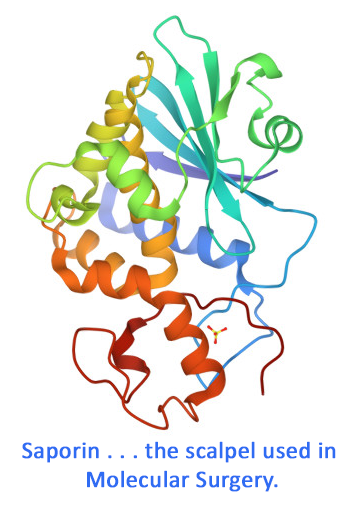CD5 is a surface glycoprotein found on more than 95% of peripheral T cells and on B-cell chronic lymphocytic leukemia cells, where it binds to CD72. It is useful for tracking T-cell counts in peripheral blood and identifying T-cell origin leukemias. The lack of CD5 on childhood acute lymphoblastic leukemia (ALL) cells is linked to a better prognosis.
Anti-CD5-SAP can be used to target and eliminate T-cells that express the CD5 surface glycoprotein. By attaching a cytotoxic agent (SAP) to the anti-CD5 antibody, it allows for selective delivery of the toxin to CD5-expressing cells, such as certain T-cell malignancies (e.g., T-cell leukemia) or autoimmune conditions involving T-cells. This targeted approach helps reduce damage to healthy cells while effectively treating diseases that involve CD5-positive T cells. It is particularly useful in therapeutic strategies for T-cell-related cancers or disorders.
Anti-CD5-SAP is a chemical conjugate of mouse anti human antibody to CD5 (Leu1) and the ribosome-inactivating protein, saporin.
Anti-CD5-SAP specifically eliminates cells that express the CD5 receptor. All other cells are left untouched.
The following control is included for validating the specificity of the beta conjugate: BIgG-SAP Mouse (Cat. #IT-74)
This product is being offered as part of our Beta Testing program. It has saporin activity confirmed, peptide sequences published/confirmed, and/or antibody binding specificity published/confirmed. It has not been characterized or reported in scientific literature. The researcher who first publishes data* will receive a $500 credit for use on ATS products.
*Data subject to review by the scientific team at ATS. See complete details here.
keywords: Saporin, CD5 CD72 T cell, B-cell, leukemia, ALL, Leu1

